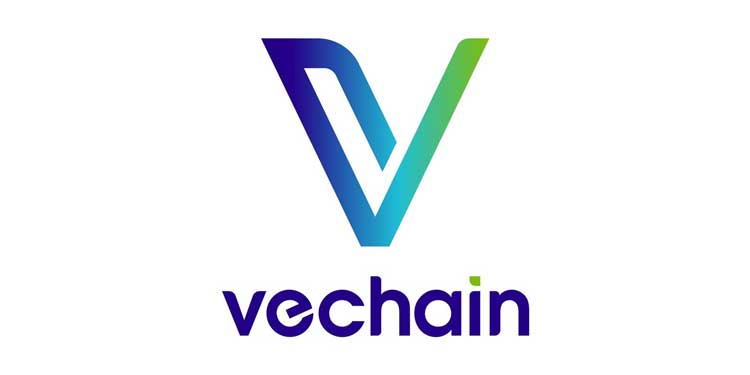Dublin, Aug. 02, 2022 (GLOBE NEWSWIRE) — The “Digital Experience Monitoring Market Forecast to 2028 – COVID-19 Impact and Global Analysis By Enterprise Size, Deployment Type, and End-User” report has been added ResearchAndMarkets.com’s Offering.
The global digital experience monitoring market size is expected to grow from USD 2,156.71 million in 2021 to USD 5,960.87 million by 2028. The digital experience monitoring market size is estimated to grow at a CAGR of 15.9% from 2022 to 2028.
The customer feedback system that is critical to any functional and profitable industry has been enhanced thanks to technology improvements. For example, companies implement an online feedback system using a cutting-edge Customer Relationship Management (CRM). As a result, client input directly helps make real-time modifications and update the company’s software to conduct a real-time assessment of quality and adjust or change as needed.
Any company experiencing a digital transition must implement digital experience monitoring systems. Streamlining the digital procedures involved in running a company lays a strong foundation for future system changes or ongoing innovation.
The rise in the use of technologies such as the Internet of Things (IoT), artificial intelligence (AI) and big data across industries is fueling the digital experience that monitors market share, helping businesses solve problems and improve IT decisions regarding devices and application performance.
According to Statista, as of 2022 there are 35.82 billion IoT devices installed worldwide, and by 2025 there will be 75.44 billion devices. From smartwatches to voice assistants, IoT gadgets are changing the way we work, communicate and interact with each other. Consumer internet and media devices, such as smartphones, cars, IT infrastructure and asset tracking and monitoring are the most important IoT devices in the consumer market. End-user adoption of smart devices is a major driver of end-user experience monitoring, which will increase demand for the digital experience monitoring market.
Cloud and mobility are accelerating an unprecedented wave of enterprise upheaval, with 70% of the top ten global enterprises being founded for the first time. Companies such as Amazon, Southwest Airlines, Apple, Disney, TD Bank and others are focusing on the customers and end-user experience to improve the software/application they provide, thereby impacting the digital experience monitoring market share. As more digital services move beyond firewalls and Application Performance Management (APM) becomes less cost-effective, end-user or DEM technologies will become increasingly popular. Therefore, modern end-user digital experience monitoring solutions are specifically built to monitor performance and availability from the user’s perspective.
Insurers are using IoT to correctly identify risk, improve customer interaction, and speed up and simplify the insurance and claims process in the financial industry. For example, car insurance companies have traditionally used indirect factors to determine premiums, such as the driver’s age, residence and creditworthiness.
Due to the Internet of Things, data on driver behavior and vehicle use, such as car speed and frequency of night driving, is now available. Insurance companies can contact customers more regularly and offer new services based on the collected data thanks to the technology. Customers often deal primarily with agents or brokers and only get the insurance company directly for policy renewal or claims processing, making the digital experience monitoring market suitable for efficiency gains. To improve the performance of IoT applications and systems, end-user or digital experience monitoring (DEM) plays a crucial role.
The impact of COVID-19
APAC is heavily affected by the COVID-19 pandemic due to many cases. The country is the most crucial manufacturer and industrial producer as it trades more manufactured goods than any other country worldwide and it is the world leader in several types of goods. The Center for Strategic and International Studies has reviewed the estimates for China’s growth, and a fall in GDP was observed in 2020.
Other major economies, such as India, South Korea, Australia and Japan, have also been affected by the pandemic and are experiencing a decline in the digital experience that monitors market growth. However, the increasing number of COVID-19 cases and high death rates in countries, such as India and various Southeast Asian countries, affected the market growth in 2020.
Furthermore, the region’s growing use of cutting-edge technologies, such as AI and IoT, will drive the market post-COVID-19 pandemic. These technologies are increasingly important in improving IT choices and helping organizations effectively solve user experience and device performance challenges. Therefore, the impact of the COVID-19 pandemic on the growth of various industries in the region slightly affected the digital experience monitoring market growth in 2020.
Key topics covered:
1. Introduction
2. Important takeaways
3. Research methodology
4. Digital Experience Monitoring Market Landscape
4.1 Market overview
4.2 PEST analysis
4.2.1 North America
4.2.2 Europe
4.2.3 APAC
4.2.4 MEA
4.2.5 SAM
4.3 Ecosystem analysis
4.4 Expert opinion
5. Digital Experience Monitoring Market – Key Market Dynamics
5.1 Market drivers
5.1.1 Demand for better end-user experience
5.1.2 Adoption of breakthrough technologies
5.2 Market Restrictions
5.2.1 Implementation risk for monitoring systems
5.3 Market opportunities
5.3.1 Adoption of AI and IoT in Fintech business
5.4 Future trends
5.4.1 EUEM overshadows APM
5.5 Consequence analysis of drivers and limitations
6. Digital Experience Monitoring Market – Global Market Analysis
6.1 Global Digital Experience Monitoring Market Overview
6.2 Global Digital Experience Monitoring Market Forecast and Analysis
6.3 Market positioning – Top five players
7. Digital Experience Monitoring Market Analysis – By Company Size
7.1 Overview
7.2 Digital Experience Monitoring Market, by Company Size (2021 and 2028)
7.3 Large companies
7.3.1 Major Companies: Digital Experience Monitoring Market – Revenue and Forecast to 2028 (Million USD)
7.4 SMEs
7.4.1 Overview
7.4.2 SMBs: Digital Experience Monitoring Market – Revenue and Forecast to 2028 (US$ Million)
8. Digital Experience Monitoring Market – By Deployment Type
8.1 Overview
8.2 Digital Experience Monitoring, by Deployment Type (2021 and 2028)
8.3 Local
8.3.1 Overview
8.3.2 On-Premises: Digital Experience Monitoring Market – Revenue and Forecast to 2028 (US$ Million)
8.4 Cloud
8.4.1 Overview
8.4.2 Cloud: Digital Experience Monitoring Market – Revenue and Forecast to 2028 (US$ Million)
9. Digital Experience Monitoring Market Analysis – By End User
9.1 Overview
9.2 Digital Experience Monitoring Market, by End User (2021 and 2028)
9.3 BFSI
9.3.1 Overview
9.3.2 BFSI: Digital Experience Monitoring Market – Revenue and Forecast to 2028 (US$ Million)
9.4 IT and telecommunications
9.4.1 IT and Telecommunications: Digital Experience Monitoring Market – Revenue and Forecast to 2028 (US$ Million)
9.5 Retail and consumer goods
9.5.1 Retail and Consumer Goods: Digital Experience Monitoring Market – Revenue and Forecast to 2028 (US$ Million)
9.6 Healthcare and life sciences
9.6.1 Healthcare and Life Sciences: Digital Experience Monitoring Market – Revenue and Forecast to 2028 (US$ Million)
9.7 Others
9.7.1 Others: Digital Experience Monitoring Market – Revenue and Forecast to 2028 (US$ Million)
10. Digital Experience Monitoring Market – Geographical Analysis
11. Impact of the COVID-19 Pandemic on the Digital Experience Monitoring Market
11.1 Overview
11.2 North America: impact assessment of the COVID-19 pandemic
11.3 Europe: impact assessment of the COVID-19 pandemic
11.4 APAC: Impact Assessment of the COVID-19 Pandemic
11.5 MEA: Impact assessment of the COVID-19 pandemic
11.6 SAM: Consequence assessment of the COVID-19 pandemic
12. Industrial landscape
12.1 Overview
12.2 Marketing Initiative
12.3 Merger and acquisition
12.4 New development
13. Company Profiles
13.1 AppDynamics LLC
13.1.1 Key facts
13.1.2 Business description
13.1.3 Products and services
13.1.4 Financial overview
13.1.5 SWOT analysis
13.1.6 Important developments
13.2 BMC Software, Inc.
13.2.1 Key facts
13.2.2 Business description
13.2.3 Products and services
13.2.4 Financial overview
13.2.5 SWOT analysis
13.2.6 Important developments
13.3 Broadcom Inc.
13.3.1 Key Facts
13.3.2 Business description
13.3.3 Products and services
13.3.4 Financial overview
13.3.5 SWOT analysis
13.3.6 Important developments
13.4 Catchpoint Systems, Inc.
13.4.1 Key facts
13.4.2 Business description
13.4.3 Products and services
13.4.4 Financial overview
13.4.5 SWOT analysis
13.4.6 Important developments
13.5 Dynatrace LLC
13.5.1 Key facts
13.5.2 Business description
13.5.3 Products and services
13.5.4 Financial overview
13.5.5 SWOT analysis
13.5.6 Important developments
13.6 IBM Corporation
13.6.1 Key Facts
13.6.2 Business description
13.6.3 Products and services
13.6.4 Financial overview
13.6.5 SWOT analysis
13.6.6 Important developments
13.7 Micro focus
13.7.1 Key facts
13.7.2 Business description
13.7.3 Products and services
13.7.4 Financial overview
13.7.5 SWOT analysis
13.7.6 Important developments
13.8 Oracle Corporation
13.8.1 Key facts
13.8.2 Business description
13.8.3 Products and services
13.8.4 Financial overview
13.8.5 SWOT analysis
13.8.6 Important developments
13.9 Riverbed Technology, Inc.
13.9.1 Key facts
13.9.2 Business description
13.9.3 Products and services
13.9.4 Financial overview
13.9.5 SWOT analysis
13.9.6 Important developments
13.10 SAP SE
13.10.1 Key facts
13.10.2 Business description
13.10.3 Products and services
13.10.4 Financial overview
13.10.5 SWOT analysis
13.10.6 Important developments
13.11 ControlUp Technologies LTD
13.11.1 Key facts
13.11.2 Business description
13.11.3 Products and services
13.11.4 Financial overview
13.11.5 SWOT analysis
13.11.6 Important developments
13.12 Lakeside Software, LLC
13.12.1 Key facts
13.12.2 Business description
13.12.3 Products and services
13.12.4 Financial overview
13.12.5 SWOT analysis
13.12.6 Important developments
13.13 Aternity LLC
13.13.1 Key facts
13.13.2 Business description
13.13.3 Products and services
13.13.4 Financial overview
13.13.5 SWOT analysis
13.13.6 Important developments
13.14 Nexthink SA
13.14.1 Key facts
13.14.2 Business description
13.14.3 Products and services
13.14.4 Financial overview
13.14.5 SWOT analysis
13.14.6 Important developments
14. Appendix
For more information on this report visit
-
Global market for digital experience monitoring

























